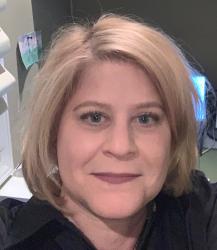Improving patient access: Q&A with Jenny Levinson

For the last 30 years, Jenny Levinson, a leader in the Boston Scientific Health Economics and Market Access (HEMA) group, has worked to ensure that patients have access to innovative treatments. We recently sat down with Jenny to learn more about the HEMA group and their role in making our life-saving technologies more accessible to patients.
How did you get into this line of work?
I graduated from college with degrees in policy and French. My first job was as a research assistant for a health policy professor. That’s when I was introduced to the role of economics in health care systems and patient outcomes. I then found a job consulting for the Centers for Medicare and Medicaid Services (CMS). I found the work fascinating and my career took off from there. I’ve been working in this field for 30 years, so I clearly love what I do!
What does the HEMA team do?
Fundamentally, our job is to demonstrate the economic value of Boston Scientific devices, and to ensure that eligible patients have access to our technologies. It ties together health, economics and market access. Leveraging our understanding of how payers and customers make decisions, we use a variety of levers, ranging from traditional health economics and outcomes research to data-based analytics in order to present the best case for why they should cover and purchase our technologies and pay appropriately for them.
What does that mean for patients?
It’s all about access. If a health care provider believes that their patient is going to benefit from a certain procedure, we want to make sure that the procedure is affordable, that it’s paid for by the payer (typically an insurer) and that the patient receives the care they need.
Can you provide an example?
A great example is our WATCHMAN FLX™ Left Atrial Appendage Closure Device, a one-time implant for patients with non-valvular atrial fibrillation (NVAF) that reduces the risk of stroke as an alternative to blood thinners. Blood thinning medications help treat or prevent dangerous blood clots that can lead to stroke. However, in doing so, patients can experience unwanted and sometimes dangerous bleeding.
All payers in the United States covered the WATCHMAN device for patients, except for one of the largest insurers in the country. We adopted a multi-year process of bringing evidence to that company. Just a few weeks ago, we had a final meeting, and they updated their policy. Now, if the WATCHMAN device is considered clinically appropriate for any of the insurer’s 23.5 million patients, they can get this procedure without paying out of pocket. Having this procedure covered by every insurer and CMS is a big win for patients with NVAF – it gives them access to the life-changing medical technology.
How does the HEMA team collaborate to achieve its goals?
The work we do requires a lot of cross-functional collaboration across Boston Scientific. Most economic evidence is predicated on clinical data. We partner with our friends on the clinical teams to gather the evidence we need to develop economic value propositions. The better clinical evidence we have, the more we can make a compelling case to payers about why they should provide access to therapies and technologies. We partner closely with our regulatory team because payers won’t even consider covering technologies until they have regulatory approvals, and we work with our government affairs teams to help shape global health care policies that are favorable to the meaningful innovations Boston Scientific provides. We also work closely with our sales and marketing teams to develop customer-facing tools that demonstrate and differentiate our technologies from an economic perspective, and to communicate with patients about how our products are reimbursed.
What’s something that may surprise people about the HEMA team or the work it does?
Well, I think that it would surprise people that this work is really interesting and not just about jargon, like CPT codes, which usually makes people fall asleep as soon as they hear the words. We have to think creatively about the best ways that we can quickly provide access to our products. That’s becoming even more important as we think about things like artificial intelligence and remote monitoring. These are new types of technologies that don’t fit into your traditional metrics of what’s cost-effective and clinically beneficial. That means we have to lay the groundwork for innovations that are coming down the pike to make sure that policymakers understand the value that these, and other advancements, may have for patient care.
Learn more about our efforts to increase access to healthcare.